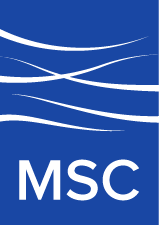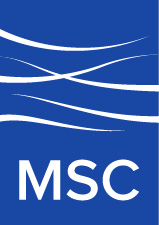Movement Strategy Center Explores Point Reyes National Seashore with FSP Alliance For Felix Cove
In the ever-growing movement to restore Indigenous lands to Indigenous hands, the Alliance for Felix Cove stands at the forefront in Northern California, fiercely fighting to protect, restore, and rematriate the ancestral homestead of the Coast Miwok/Támal-ko Felix Family. Recently, our communications team embarked on a transformative exploration to Felix Cove — nestled within the grassy ridgelands of Point Reyes National Seashore in California — guided by the remarkable Theresa Harlan, visionary founder and executive director of the Alliance for Felix Cove. Our unforgettable journey unveiled both the vibrant tapestry of her family’s heritage and the natural beauty of this small corner of Point Reyes. It also shed light on the pressing imperative for federal protection of this historically significant land.

Accompanied by Harlan, her husband Ken Tiger, and Kim Tercero from the Alliance’s Strawberry Sister Leadership Circle, we gathered at the Bear Valley Visitor Center before embarking on a backroad carpool through the privately run ranches situated on these public lands. As the roadway went from paved to unpaved, the dense evergreen forest gradually gave way to the raw beauty of the coastal grasslands where we spotted raptors, foxes, and a pair of California quail among grazing cattle.
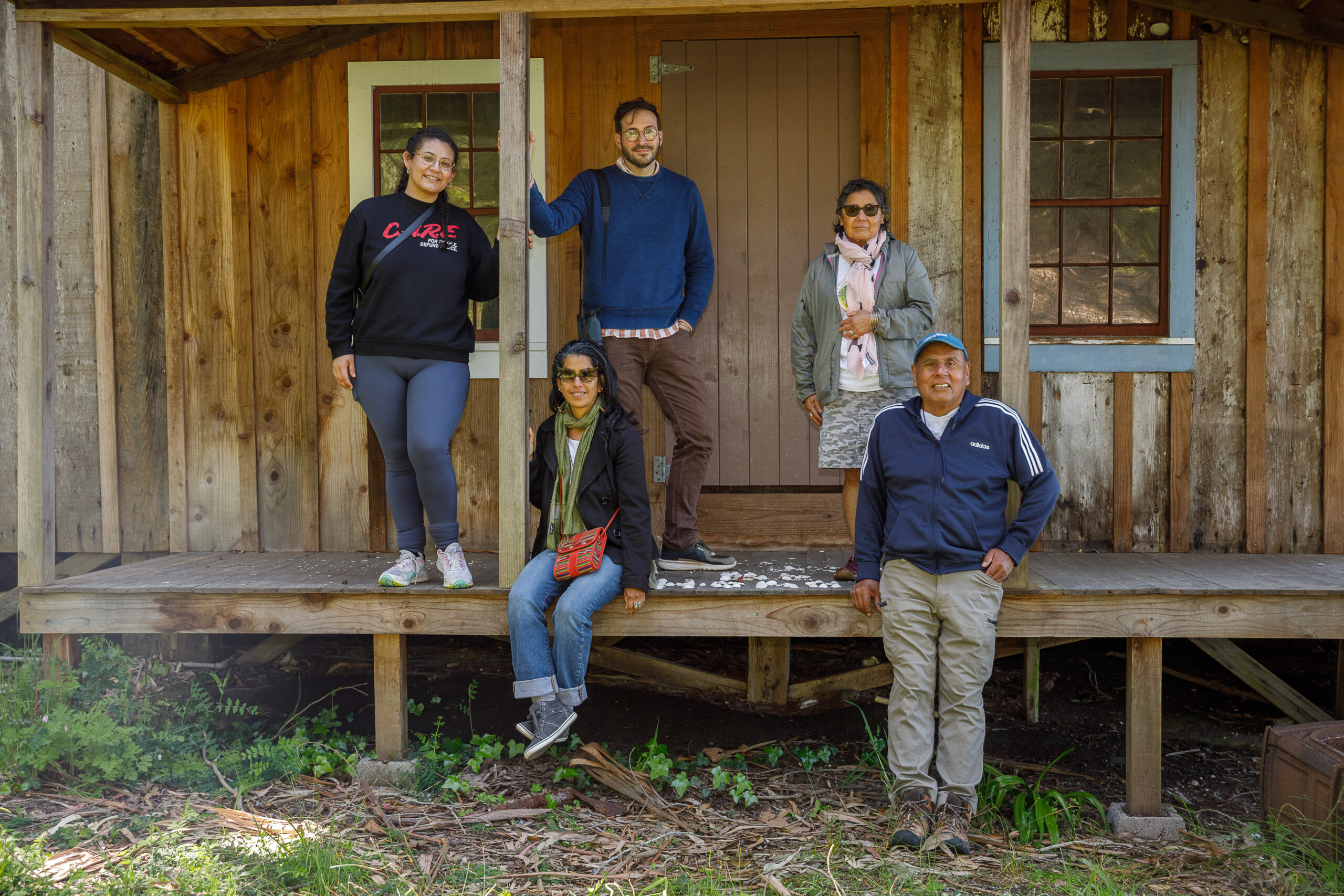
Our destination, Felix Cove, can only be reached after a one-mile downhill hike. As we traversed Inverness Ridge and ventured towards the Point Reyes headlands, we were mesmerized by the abundant lush flora enveloping us. This rare display, considering the wildfires and floods the area has experienced in the last few years, was a gift of timing — after weeks of winter and spring rains, the hills were in full bloom.
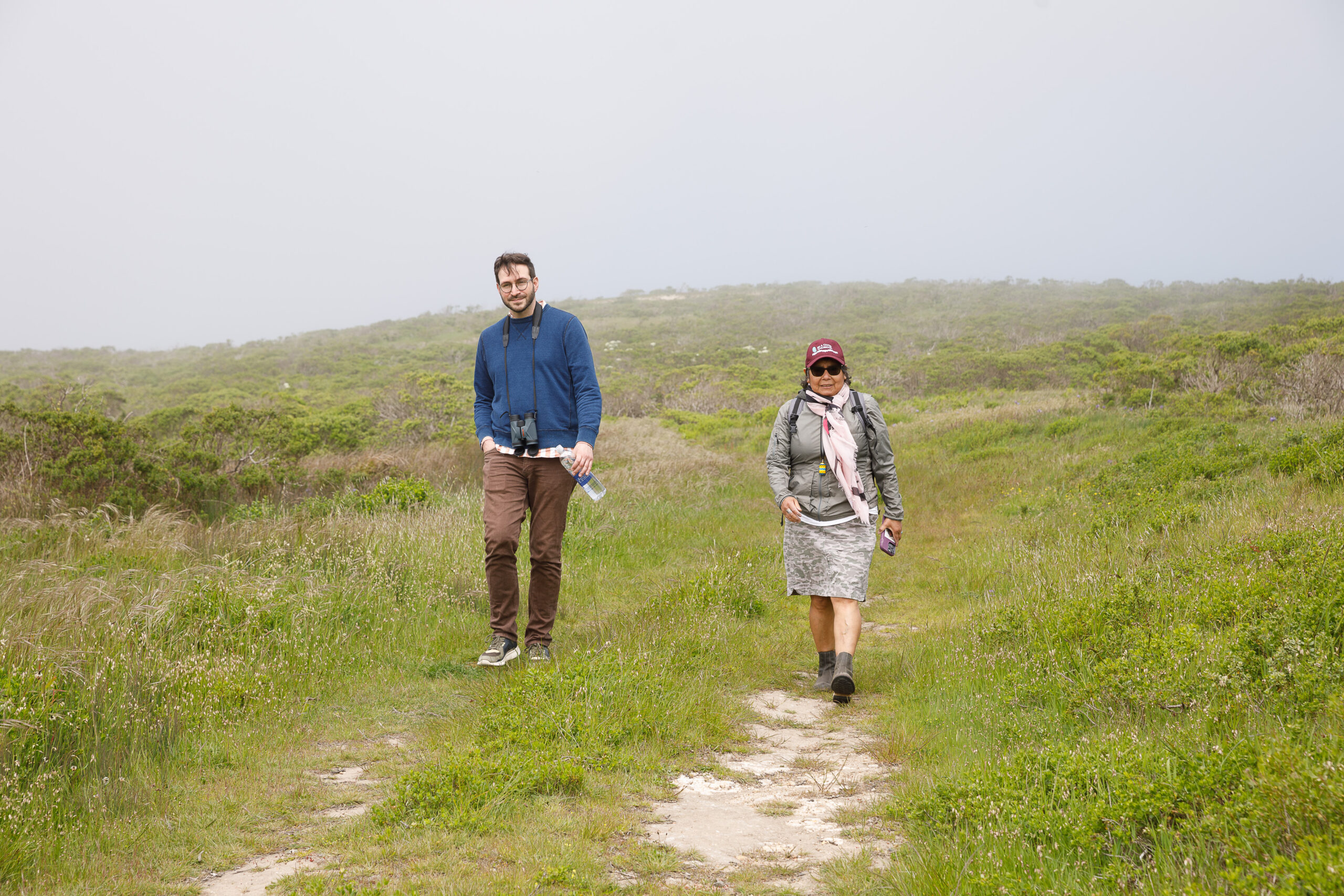
Harlan’s knowledge of Indigenous plant species along with her insights on invasive species enriched our experience. We made several stops along our hike to admire the landscape’s diversity. Harlan would call out a plant and, in some cases, what those plants could be used for (coastal lotus, Douglas iris, California poppy, pussy ears or hairy star tulip) while Frank Gargione, MSC’s communications director, would chime in by naming the various species of birds spotted or heard along the path (wrentit, purple finch, Allen’s hummingbird, orange-crowned warbler). As we walked, we searched the edges of the trail for coastal strawberry — a creeping plant with small red berries that symbolizes the area for Coast Miwok/Támal-ko people and lends its name to the Alliance’s aforementioned leadership circle. Sometimes, we had to remind ourselves to look up and take in the incredible vistas — sloping green with water and mountains in the distance, ghostly beautiful white-tailed kites circling overhead — all serving as a poignant reminder of the imperative to preserve and protect these natural treasures.
The rugged landscape and its abundant grasslands attracted Spanish friars, Mexican rancheros, and finally European immigrant ranchers who sought fertile grazing grounds for their livestock in the 1800s. Thus, the 150 year history of immigrant cattle ranching and their Spanish missionary counterparts have become the dominant narrative in terms of Point Reyes heritage — all while Indigenous culture and history has been virtually erased. Still, a present-day population of 1,300 Coast Miwok people represents a 10,000 year tradition of culture and resilient land stewardship.
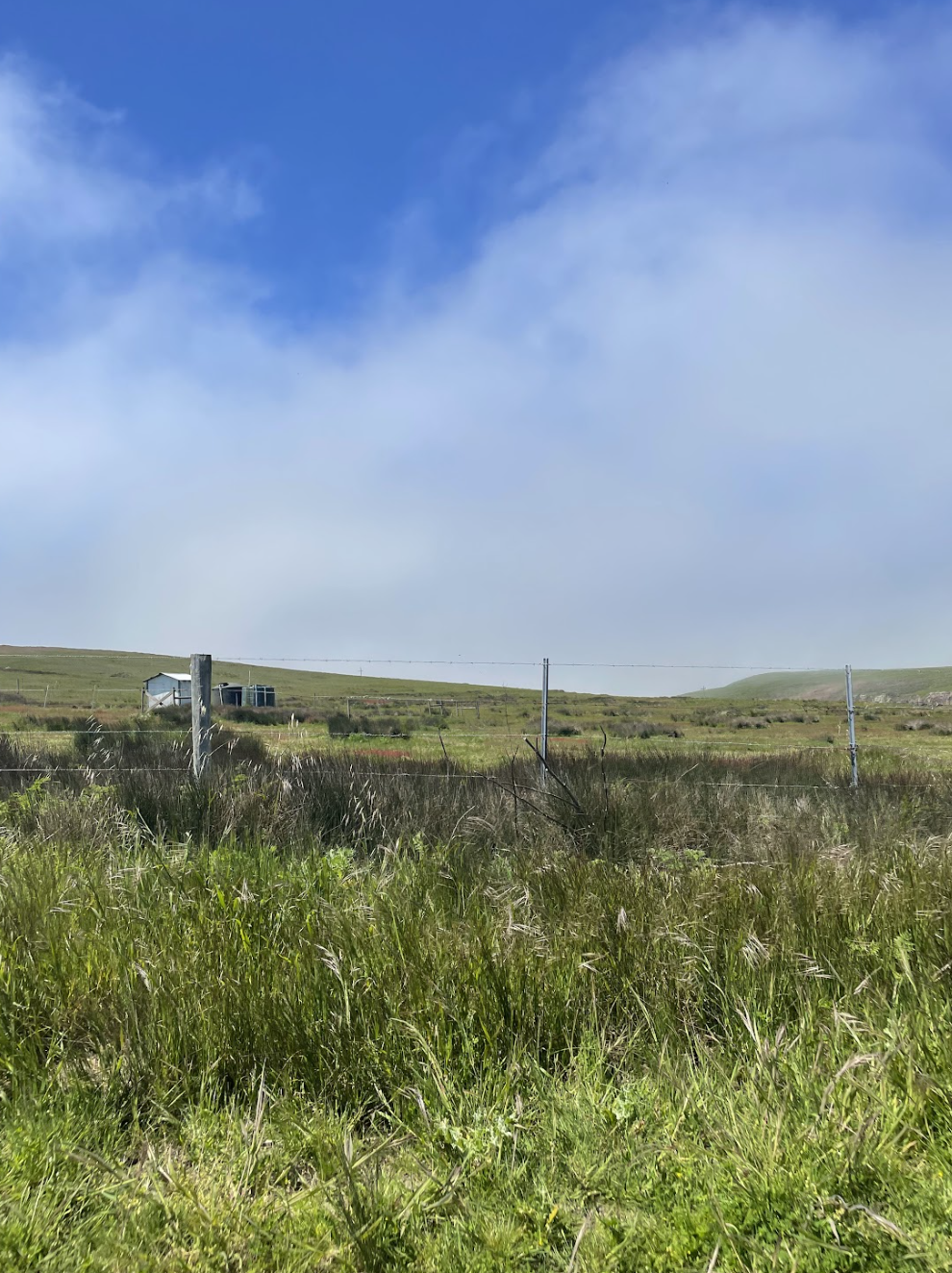
Upon arrival at the cove, Tiger was the first to notice that the lock on the home Harlan’s family built in the late 1800s — the last remaining Támalko home — had been tampered with. It then became obvious that the adjacent cabin, constructed by Harlan’s grandfather Arnold Campigli (a Swiss-Italian immigrant), was covered in graffiti inside and out. The cabin, a sort of guesthouse, was built with salvaged lumber that Campigli milled himself. Harlan and Tiger expressed concern but recognized that such incidents were inevitable as park management rarely patrols the area. They promptly contacted rangers, informing them of the situation and requesting a lock replacement, as well as periodic visits to the property. Since our visit, repairs have been made, structures have been secured with new windows, and wildlife cameras have been installed — both for fauna and security.
Although they currently reside an hour and a half away — many of their family members have been forced inland as real estate prices have skyrocketed — Harlan and Tiger try to visit the cove several times a month, tending to the pathway, reporting back to the park, and envisioning ambitious plans for the cove’s future as a gathering place and educational facility.
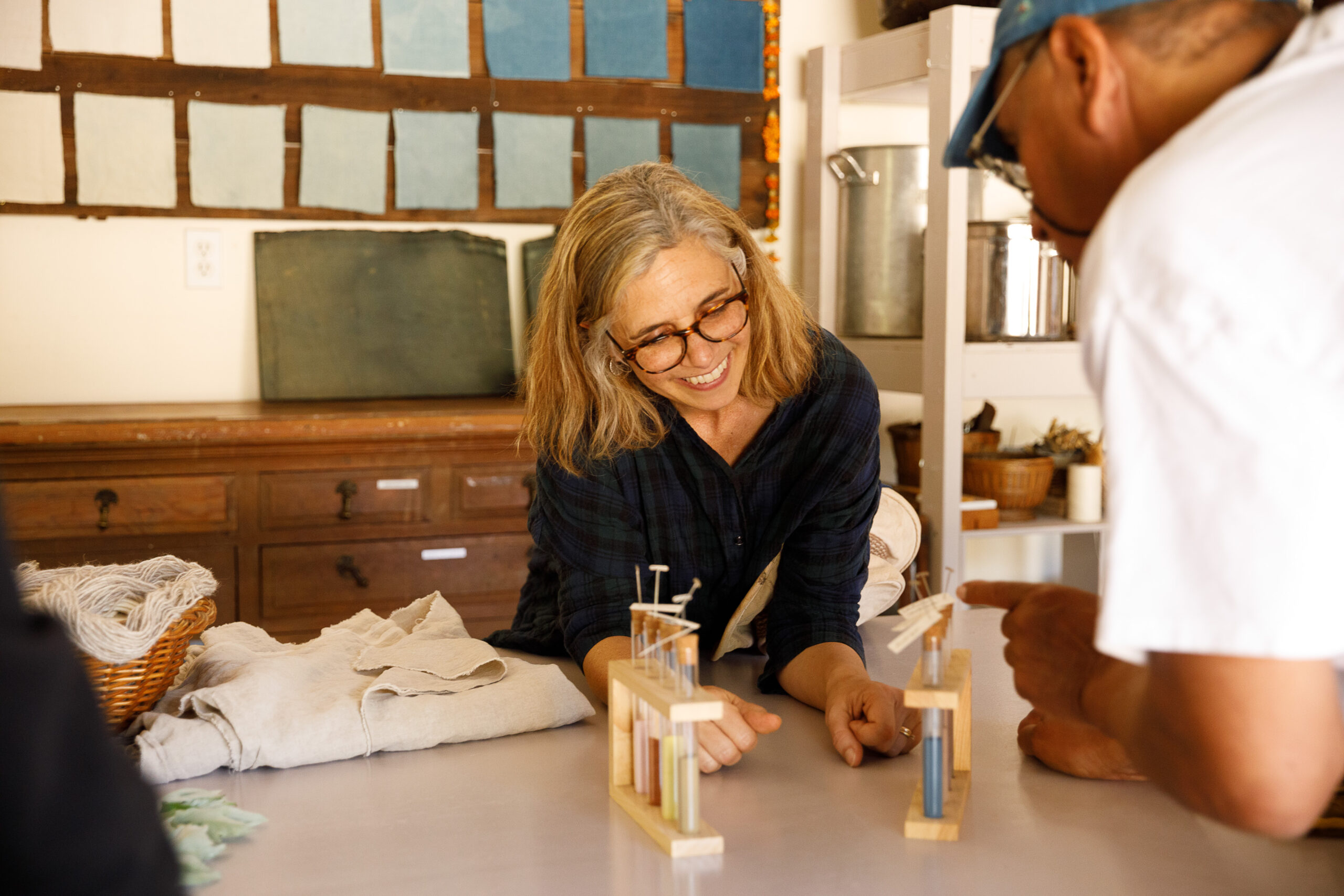
Harlan eagerly shared that vision — space and programming for Coast Miwok/Támal-ko tribe members and others, a garden of native and medicinal plants, easier access along a better maintained path, historical markers, and the buildings restored and accessible. She also arranged for us to visit the nearby Fibershed, to flesh out her vision.
As a nonprofit organization, Fibershed is dedicated to establishing regional fiber and dying systems that promote the health of ecosystems and communities, foster climate benefiting agriculture, support a more local and sustainable textile industry, and contribute to racial and economic equity. The organization embodies sustainable practices and harmonious coexistence with the natural world, features a gorgeous garden that serves as inspiration for one that will soon grow at Felix Cove, and even presented slate of naturally dyed flax and cotton fabrics that could serve as a template for Felix Cove’s color palette.
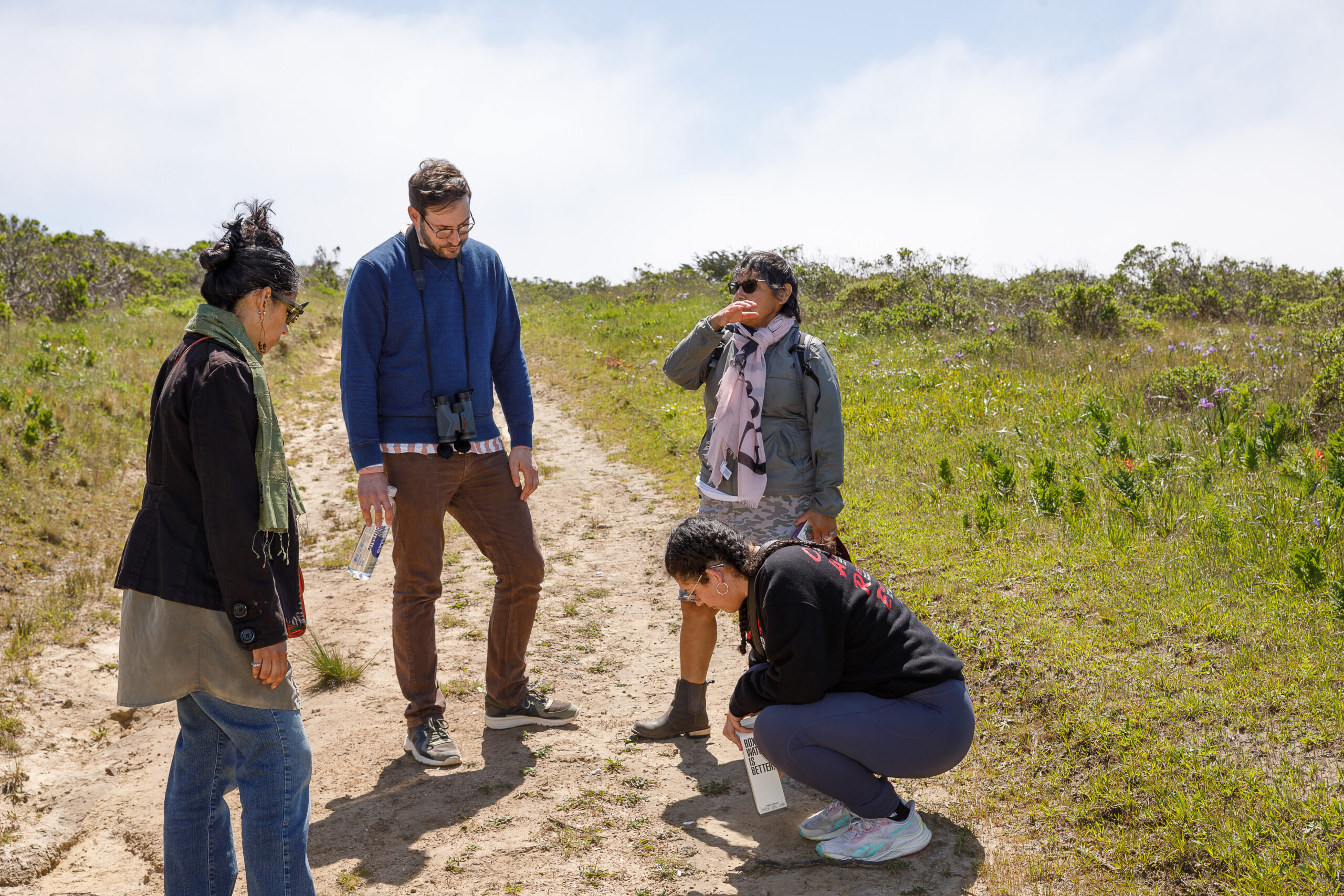
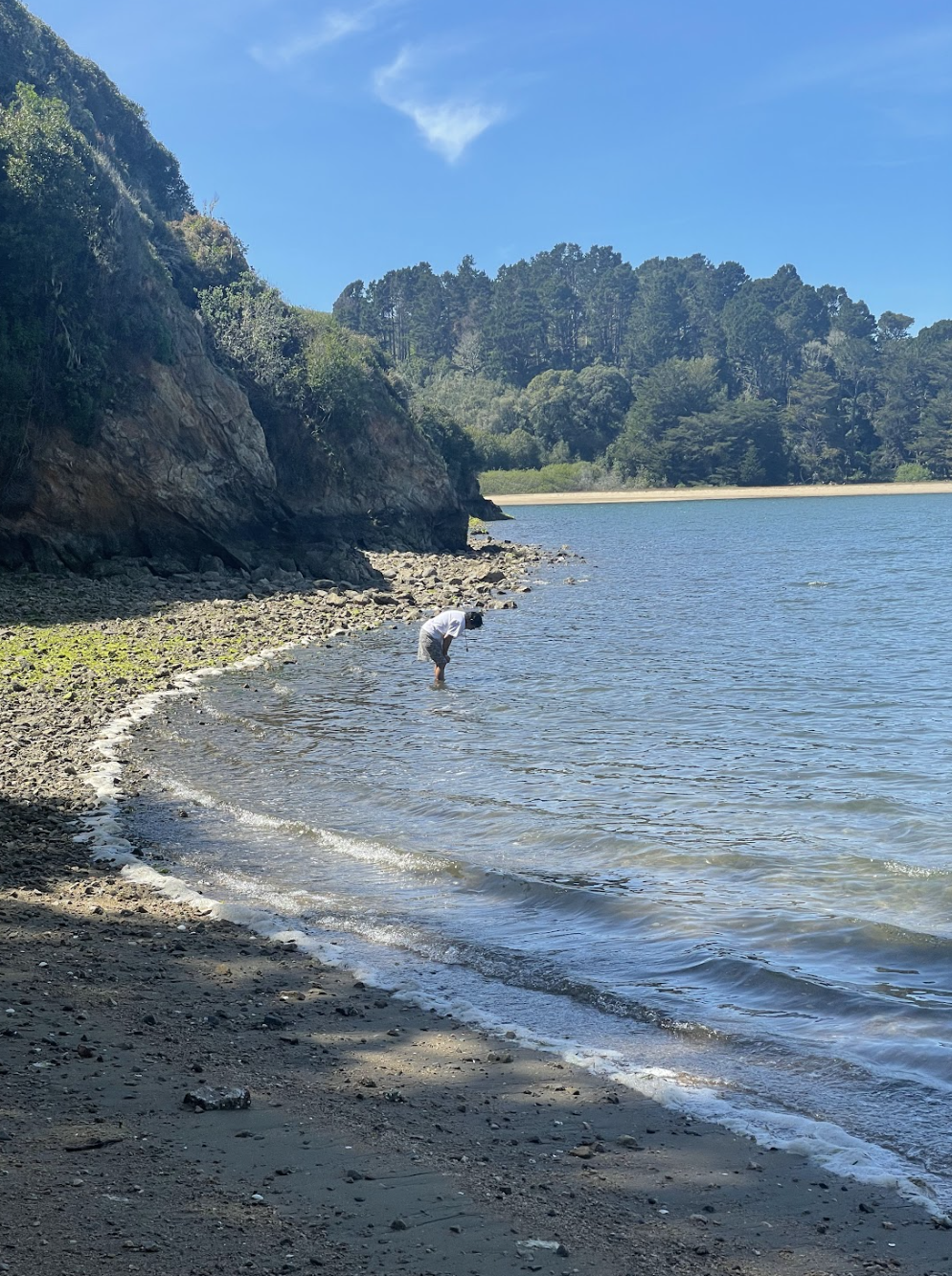
Harlan was animated as she shared stories about her family, the history of the cove, and the challenges faced by her relatives and other Native communities in the area. We learned about politics within the ranching community, including the unjust treatment and targeting of Native students. These stories illuminated the complexities of governance and education systems for Indigenous peoples and deepened our understanding of both their resilience and their weariness.

Our day at Felix Cove filled our hearts with delight and awe at the sights and sounds of flowers, birds, and lapping blue water; the recently scorched earth now adorned with grasses and poppies — proof of the resilience of nature and a powerful reminder that the earth possesses the innate ability to heal itself and to heal us, if we let it.
While our hearts sank as the discovery of vandalism at the site, it highlighted the need for increased awareness and education regarding preservation of this historically significant land. The Alliance for Felix Cove’s tireless efforts to protect the last remaining 19th century Támal-ko-built home within Point Reyes National Seashore takes on heightened importance as we confront the reality that there are people who may fail to honor this sacred space.
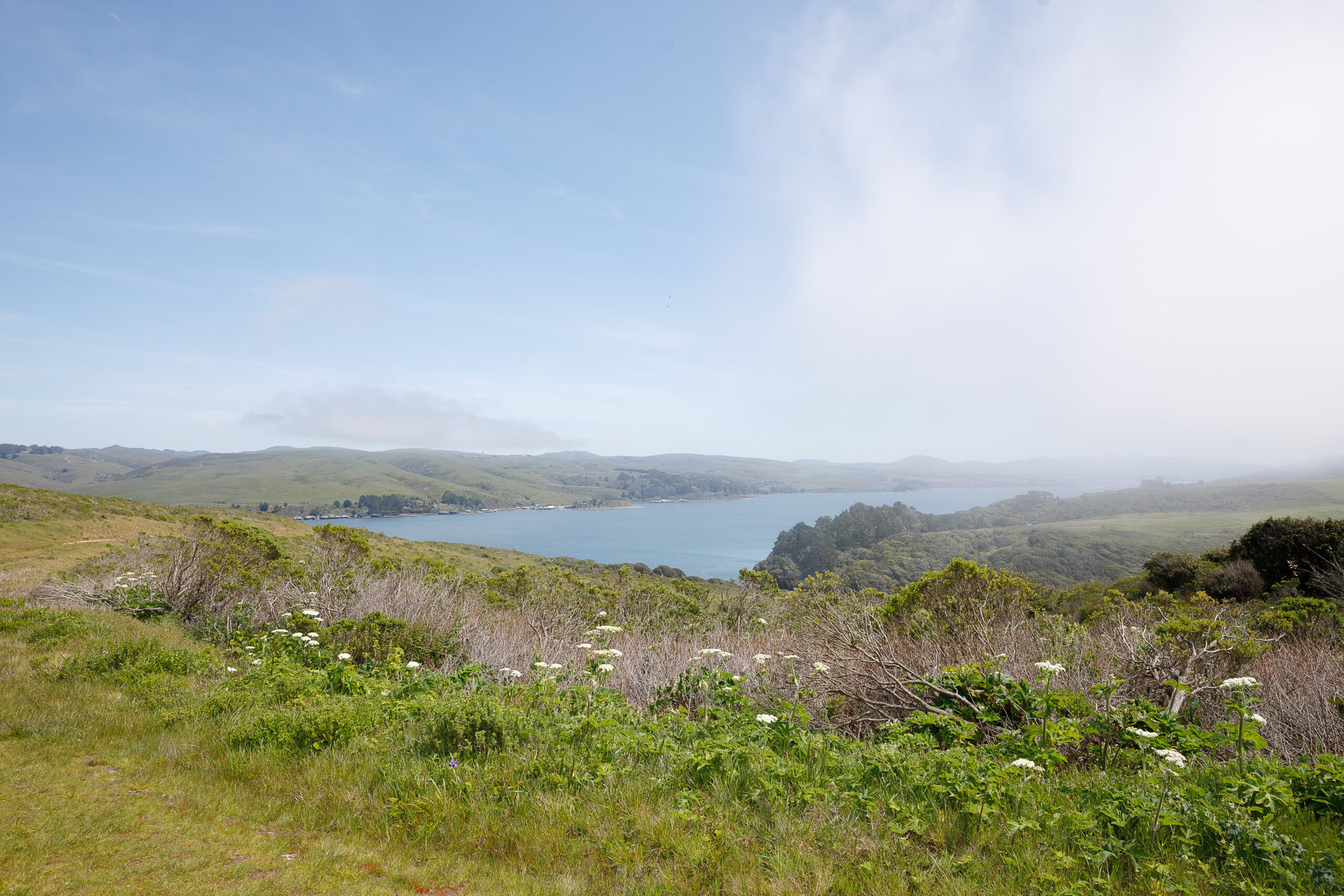
Our experience recommitted us to the profound importance of protecting Indigenous heritage and nurturing our natural landscapes. With the Alliance for Felix Cove leading the charge, we are reminded of the significance of partnerships and collaborations in our pursuit of environmental conservation and social justice, and just how important practicing traditional ecological knowledge is so future generations may come to appreciate this invaluable piece of history and natural beauty.
Alliance for Felix Cove is rewriting the narrative of Indigenous heritage and environmental advocacy and you have the power to make a difference by supporting their work through donations, volunteering your time, and by uplifting their mission online.
Special thanks to Bryan and Vita Hewitt for capturing this unforgettable journey through their captivating photography and videography.
